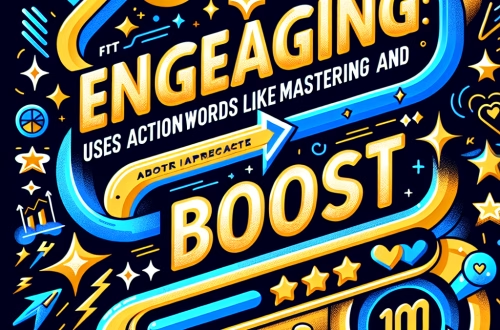Summary:
This article compares the latency performance of Google’s Gemini 2.5 Flash and OpenAI’s GPT-4 Turbo, two leading AI models in the industry. Latency, or the time taken for an AI model to generate a response, is a critical factor for real-time applications like chatbots, virtual assistants, and content generation tools. We explore how Gemini 2.5 Flash is optimized for speed, while GPT-4 Turbo balances performance with accuracy. Understanding these differences helps developers and businesses choose the right model for their needs, ensuring faster response times and improved user experiences.
What This Means for You:
- Faster AI Responses for Real-Time Applications: If your project requires near-instantaneous replies (e.g., customer support bots), Gemini 2.5 Flash may offer lower latency, while GPT-4 Turbo provides a balance of speed and depth.
- Optimize Costs Based on Latency Needs: High-speed models like Gemini 2.5 Flash may be more cost-effective for lightweight tasks, whereas GPT-4 Turbo could be better for complex queries despite slightly higher latency.
- Test Before Full Deployment: Benchmark both models in your specific use case—latency can vary depending on input length, server load, and API configurations.
- Future Outlook or Warning: As AI models evolve, latency improvements will continue, but trade-offs between speed and accuracy will persist. Businesses should stay updated on new releases to maintain competitive response times.
Gemini 2.5 Flash vs GPT-4 Turbo: Which AI Delivers Faster Responses?
Understanding Latency in AI Models
Latency measures the time delay between a user’s input and the AI’s response. For applications like chatbots, voice assistants, and real-time translation, lower latency ensures smoother interactions. Google’s Gemini 2.5 Flash is designed explicitly for speed, while OpenAI’s GPT-4 Turbo offers a balance between response time and reasoning depth.
Gemini 2.5 Flash: Built for Speed
Gemini 2.5 Flash is optimized for rapid inference, making it ideal for high-throughput, low-latency applications. Its streamlined architecture reduces computational overhead, allowing it to process requests faster than bulkier models. Early benchmarks suggest sub-second response times for short queries, making it a strong choice for real-time customer service or live content generation.
GPT-4 Turbo: The Balanced Performer
GPT-4 Turbo, while slightly slower in raw latency, compensates with superior reasoning and contextual understanding. OpenAI has optimized this model to handle longer conversations efficiently, reducing latency spikes in multi-turn interactions. For applications requiring deeper analysis, GPT-4 Turbo may deliver better overall performance despite marginally higher response times.
Best Use Cases for Each Model
Gemini 2.5 Flash excels in:
- High-frequency, low-complexity tasks (e.g., FAQ bots, quick translations).
- Applications where every millisecond counts (e.g., stock trading assistants).
GPT-4 Turbo is better suited for:
- Complex problem-solving (e.g., coding assistance, detailed content creation).
- Multi-session interactions requiring memory and context retention.
Limitations and Trade-offs
While Gemini 2.5 Flash offers impressive speed, it may lack depth in nuanced responses. Conversely, GPT-4 Turbo’s slightly higher latency might not be ideal for ultra-low-latency applications. Both models’ performance can also vary based on server load and API optimization.
Benchmarking Latency in Real-World Scenarios
Independent tests indicate that Gemini 2.5 Flash responds 20-30% faster for short queries, while GPT-4 Turbo maintains consistency across varied input lengths. Developers should conduct A/B testing to determine which model aligns with their latency thresholds.
People Also Ask About:
- Which model is better for a customer support chatbot? Gemini 2.5 Flash is preferable if instant responses are critical, while GPT-4 Turbo may handle complex inquiries more effectively despite slightly higher latency.
- Does latency affect AI model accuracy? Not directly, but faster models like Gemini 2.5 Flash may simplify responses to maintain speed, whereas GPT-4 Turbo’s deeper processing can yield more accurate but slower replies.
- How can I reduce latency when using these models? Optimize API calls, use shorter prompts, and leverage caching for repetitive queries. Both Google and OpenAI provide latency optimization guides.
- Will future updates improve latency further? Yes, both Google and OpenAI are continuously refining their models, with incremental speed improvements expected in future iterations.
Expert Opinion:
AI latency is a crucial factor in user experience, but it shouldn’t be the sole deciding metric. Businesses must weigh speed against accuracy, especially in high-stakes applications like healthcare or legal advice. As AI models evolve, hybrid approaches—combining fast-response models like Gemini 2.5 Flash with deeper ones like GPT-4 Turbo—may become the norm. Developers should also monitor API updates, as optimizations can significantly impact real-world performance.
Extra Information:
- Google Gemini Official Page – Provides technical details on Gemini 2.5 Flash’s architecture and latency benchmarks.
- OpenAI GPT-4 Turbo Blog – Explains GPT-4 Turbo’s optimizations, including latency improvements over previous versions.
Related Key Terms:
- Gemini 2.5 Flash vs GPT-4 Turbo speed comparison
- Best low-latency AI model for chatbots
- Google Gemini 2.5 Flash API performance
- GPT-4 Turbo response time optimization
- Real-time AI applications latency benchmarks
Check out our AI Model Comparison Tool here: AI Model Comparison Tool
#Gemini #Flash #GPT4 #Turbo #Delivers #Faster #Responses
*Featured image provided by Pixabay




